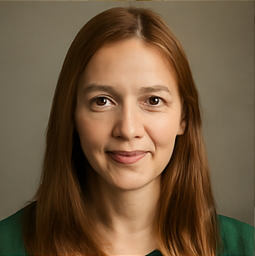Caltech Researcher Invents Groundbreaking Camera That Captures 1 Trillion Frames Per Second












2025-06-17T00:07:00Z

A researcher from the California Institute of Technology (Caltech) has achieved a remarkable feat in the realm of ultrafast photography by developing a camera that can capture up to 1 trillion frames per second. This astonishing speed allows for the visualization of the inner workings of transparent materials, an achievement that many scientists previously believed to be impossible. The innovative camera, which is detailed in the journal Science Advances, signifies a shift not just in speed, but also in the capability to image previously elusive objects such as glass and water.
Just over a year ago, a different camera wowed audiences with its ability to take 10 trillion frames per second, showcasing light in slow motion. However, despite its groundbreaking capabilities, that earlier model faced a fundamental limitation: it could only capture light from opaque objects. This shortcoming prompted Caltech's Lihong Wang, a leading engineer in both medical and electrical engineering, to embark on a new quest—creating a camera that could focus on the transparency of materials, thereby expanding the boundaries of what can be imaged.
The newly developed system, termed phase-sensitive compressed ultrafast photography (pCUP), not only captures ultrafast events in transparent materials but also offers the opportunity to visualize phenomena such as shockwaves and even rapid electrical signals in the brain. The camera builds upon a century-old technique known as phase-contrast microscopy, which was originally developed by Dutch physicist Frits Zernike. This classic method relies on the changes in the speed of light as it passes through different materials, leading to subtle alterations in light waves that, when precisely manipulated, allow scientists to create images of materials that are otherwise visually imperceptible.
“What we’ve done is adapt standard phase-contrast microscopy for ultrafast imaging, enabling us to visualize quick phenomena within transparent substances,” explained Wang. At the heart of this new imaging system is a technology called lossless encoding compressed ultrafast photography (LLE-CUP). Unlike traditional ultrafast video technologies, which require multiple shots of the same event, LLE-CUP captures everything in a single frame, making it particularly well-suited for events that unfold too rapidly to be staged again. For instance, it can record how shockwaves propagate through glass or monitor energy bursts within neurons.
In their research, Wang and his team showcased the potential of pCUP by successfully capturing the dynamics of a shockwave traveling through water and tracking a laser pulse as it navigated through a crystalline material. These experiments highlight the transformative impact that pCUP could have across numerous scientific disciplines, including physics, biology, and chemistry.
Wang sees enormous potential for pCUP in the field of neuroscience, specifically in observing the subtle expansions of nerve fibers as signals traverse them. “If we have a network of neurons, perhaps we can see their communication in real time,” he remarked. Furthermore, pCUP could be pivotal in visualizing how flames spread inside combustion chambers, as the phase contrast of light changes with varying temperatures.
In addition to its uses in neuroscience, pCUP holds promise for a variety of applications across scientific and industrial sectors:
- Biomedical Imaging: It can capture rapid cellular processes such as protein folding and molecular interactions, providing valuable insights into biological mechanisms.
- Neuroimaging: pCUP can help study fast neuronal activity, improving our understanding of neurological diseases.
- Chemical Reactions: It facilitates the observation of ultrafast chemical reactions and helps in developing new catalysts.
- Materials Science: pCUP can provide insights into rapid phase transitions, aiding the design of advanced materials.
- Fluid Dynamics: It can visualize turbulence and shock waves, enhancing our knowledge of fluid dynamics in various applications.
- Security and Defense: pCUP can capture explosive dynamics and high-speed projectile motion, contributing to improved safety measures.
The research paper titled “Picosecond-resolution phase-sensitive imaging of transparent objects in a single shot” includes contributions from co-authors Taewoo Kim, a postdoctoral scholar in medical engineering, and former Caltech researchers Jinyang Liang and Liren Zhu. This groundbreaking work received support from the National Institutes of Health and emphasizes Wang's affiliation with the Tianqiao and Chrissy Chen Institute for Neuroscience at Caltech, showcasing his dedication to advancing our understanding of the brain.
As the development of pCUP progresses, its potential to unveil previously hidden phenomena could lead to significant scientific breakthroughs and applications, making the invisible visible.
 Elena Petrova
Elena Petrova
Source of the news: The Brighter Side of News